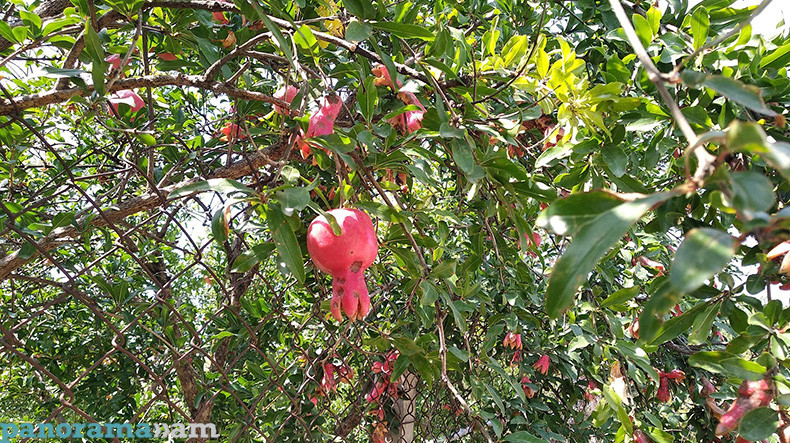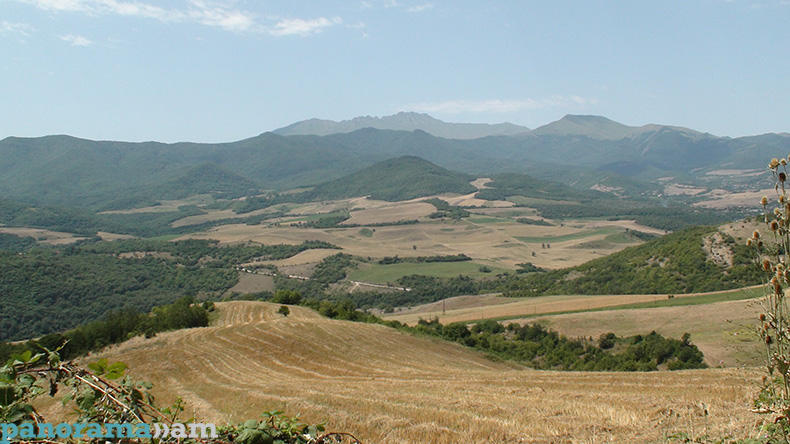
Artsakh on its way to self-sufficiency as sown areas keep growing in country
While the sown areas keep decreasing in Armenia annually, they are on the rise in Artsakh, with agriculture chiefs planning to achieve self-sufficiency in fruits and vegetables and leave no unsown lands in the country.
Due to the ongoing state-supported programs aimed at encouraging farming, some 70% of arable lands are cultivated in Artsakh today.
“The autumn sown areas have increased by 20,000 hectares this year compared to last year. If some 10 years ago almost half of our arable lands were not cultivated, now over 70% is cultivated,” Artsakh Deputy Minister of Agriculture Vilen Asatryan told Panorama.am.
The government supports and encourages farmers in several ways by providing them with free seeds and mineral fertilizers, with vegetable growers receiving gratuitous 200,000 drams per hectare. This program has been implemented since 2016, having 1000 beneficiaries this year.
The agriculture ministry is not fully satisfied with this year’s harvest, which has been greatly damaged due to hailstorms, strong winds and drought.
“The grain crops were the most affected. Around 15,000 hectares of agricultural lands, including 13,000 hectares of cereal crops, have been damaged in the wake of natural disasters,” he said. “Taking into account the scale of damages and the harvest volumes, I consider the figures sufficient; a total of 82,000 tons of wheat crops have been harvested this year, with an average crop yield of 22 centners per hectare.”
This year Artsakh’s cereal harvest has been good enough not to import wheat or barley. Moreover, the country has exported nearly 20,000 tons of grain to Armenia throughout 2018.
Apart from traditional fruits and vegetables, Artsakh constantly cultivates new crops and trees, including olives, flax and kiwi, which grow well especially in Hadrut, Martakert and Askeran.
Flax and sunflower are processed in Stepanakert to produce Golden Drop oil, which, along with vegetable oil, enjoys quite a high demand in the local market.
The country is actively engaged in pomegranate harvest now, with some 1,000 tons of pomegranates already collected from 350 hectares.
In 2017, then Prime Minister of Armenia Karen Karapetyan unveiled his plans to establish a pomegranate orchard of 200 hectare in Artsakh, but the deputy minister said he has no information whether the ex-PM has started implementing the project. “But pomegranate orchards have generally grown by around 100 hectares to 1,360 this year from last year,” he said.
Pomegranate grows best in five regions of the country – Askeran (637 hectares), Hadrut (45 hectares), Martakert (197 hectares), Kashatagh (315 hectares) and Martuni (166 hectares). The major part of the crops was consumed at the local markets last year, with some part of the harvested pomegranates exported to Armenia and other states.
Meanwhile, Artsakh imports tomatoes since the country’s local tomato crop is not enough. “We are going to increase the self-sufficiency to a point that no uncultivated lands are left in the country. We shall analyse the programs we have implemented in the near future and based on the results we will draw up the next year’s programs and continue to work accordingly. Agriculture is a very profitable branch, if the works are arranged properly. Engaging in agriculture becomes more attractive in Artsakh year by year,” Asatryan said.
Photos by the author
Martuni, Artsakh
Askeran, Artsakh
.jpg)
Newsfeed
Videos































